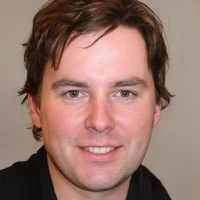Understanding Fluticasone-Salmeterol Inhalers
Before diving into the manufacturing process of fluticasone-salmeterol inhalers, it's important to understand what they are and why they are prescribed. Fluticasone-salmeterol inhalers, also known as combination inhalers, are used to treat asthma and chronic obstructive pulmonary disease (COPD). They contain two active ingredients: fluticasone, a corticosteroid that reduces inflammation, and salmeterol, a long-acting bronchodilator that helps open the airways. These medications work together to help patients breathe more easily and prevent asthma attacks or COPD flare-ups.
The Role of Active Pharmaceutical Ingredients
The first stage in the manufacturing process of fluticasone-salmeterol inhalers involves the production of the active pharmaceutical ingredients (APIs). APIs are the substances responsible for the therapeutic effects of a medication. In this case, the APIs are fluticasone propionate and salmeterol xinafoate. These ingredients are produced through a series of chemical reactions and purification processes, which are strictly controlled to ensure their safety and effectiveness. Once the APIs are produced, they are carefully tested to confirm their purity, potency, and stability.
Preparing the Inhaler Components
While the APIs are being produced, the other components of the inhaler are also being prepared. This includes the inhaler device itself, which is typically made from high-quality plastic materials. The device consists of several parts, such as the canister that holds the medication, the metering valve that controls the dose, and the mouthpiece through which the medication is inhaled. Each component is carefully designed and manufactured to ensure its proper function and durability. Additionally, the propellant gas is selected and prepared. This gas is responsible for delivering the medication from the canister to the patient's lungs when they use the inhaler.
Formulating the Inhaler Contents
Once the APIs and inhaler components are ready, the next step is to formulate the medication that goes inside the inhaler. This involves combining the fluticasone and salmeterol APIs with the propellant gas and any necessary excipients (inactive ingredients that help improve the medication's stability or delivery). The exact formulation of the inhaler contents is crucial, as it determines how well the medication is delivered to the patient's lungs and how effectively it works. After the formulation is prepared, it is filled into the canisters using specialized equipment that ensures precise dosing.
Quality Control and Packaging
Throughout the manufacturing process, rigorous quality control measures are in place to ensure the safety and effectiveness of the fluticasone-salmeterol inhalers. This includes testing the APIs, the inhaler components, and the final product. Once the inhalers have passed all necessary quality checks, they are packaged and labeled according to regulatory requirements. This typically involves placing the inhaler canister inside the plastic device, sealing it in a protective pouch, and including an informative leaflet with usage instructions and safety information. Finally, the packaged inhalers are shipped to pharmacies and healthcare providers, where they can be prescribed to patients in need.
In conclusion, the manufacturing process of fluticasone-salmeterol inhalers involves multiple stages, from the production of APIs to the formulation and packaging of the final product. Each step is carefully controlled and monitored to ensure the highest quality and safety standards are met. As a result, patients can trust that their combination inhalers are effective in helping them manage their asthma or COPD symptoms and breathe more easily.







Man, I never realized how much goes into these inhalers. The precision just blows my mind. They’re not just spray cans - it’s like a mini pharmaceutical factory in every box.
The API synthesis phase, particularly the esterification and salt formation of fluticasone propionate and salmeterol xinafoate, requires stringent control over reaction kinetics, stoichiometric ratios, and crystallization parameters to ensure polymorphic consistency and bioavailability-this is non-negotiable under cGMP guidelines.
Oh sure, let’s just pretend this isn’t Big Pharma selling us air in a can for $300. You think they care about your lungs or their quarterly earnings?
This is what true medicine looks like! Not just pills you swallow hoping for the best-but precision-engineered relief that reaches deep into your lungs like a gentle warrior. Every dose is a promise kept. Thank you to the scientists who make this possible.
lol at the ‘rigorous quality control’ part. Ever heard of the 2018 recall of 1.2 million inhalers because the valve stuck? Yeah, ‘rigorous’ my ass. Also, why is the propellant still HFA-134a? We’ve had greener options for a decade. Greenwashing much?
As someone who’s been on this combo for 8 years, I can tell you-this isn’t just chemistry. It’s freedom. I used to gasp walking up stairs. Now I hike. The engineering behind this? Pure genius. Hats off to the teams who make sure every puff works.
It’s wild how much invisible labor goes into something so small. The people cleaning the cleanrooms, the chemists double-checking purity, the quality control folks running HPLC all night-none of them get thanked. But without them, none of us could breathe easy. Just… thank you, unseen heroes.
Let me clarify: the entire narrative presented here is a corporate sanitization of pharmaceutical manufacturing. The APIs are not ‘produced’-they are synthesized under patent-protected, monopolistic conditions by a handful of global suppliers. The ‘quality control’ is performative, designed to satisfy regulators, not patients. The real cost? Exploited labor in India and China, environmental degradation from solvent waste, and inflated pricing enabled by FDA exclusivity loopholes. This is not medicine. It is capitalism with a stethoscope.
@Mathias Matengu Mabuta - I get where you’re coming from, and yeah, the system’s broken. But right now, for millions of people, this inhaler is the only thing standing between them and the ER. Maybe we fight the system, but we don’t trash the tool that keeps us alive.
Actually, your ‘greener propellant’ comment is naive. HFA-134a replaced CFCs because they destroyed the ozone layer. The alternatives you’re imagining? They’re either less stable, more toxic, or worse for the climate. You want green? Advocate for better regulation, not fantasy chemistry.
Wow… I just read this and cried. I lost my brother to COPD… he couldn’t afford this inhaler… we had to use expired ones… please… someone… make this affordable…